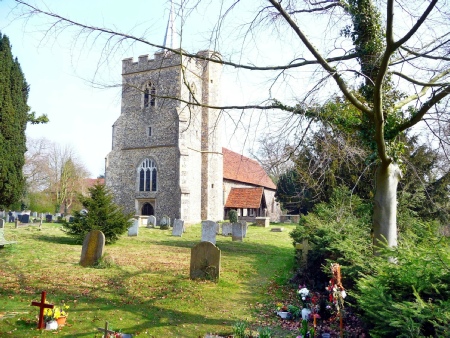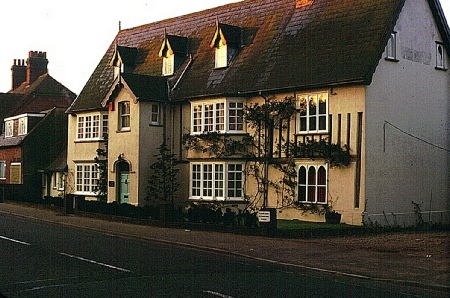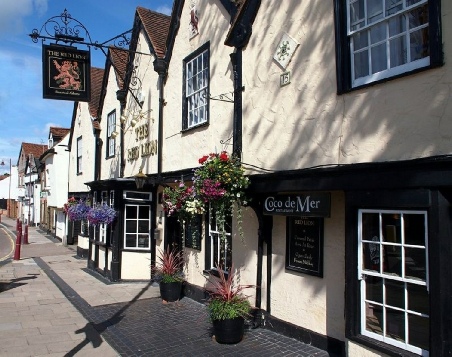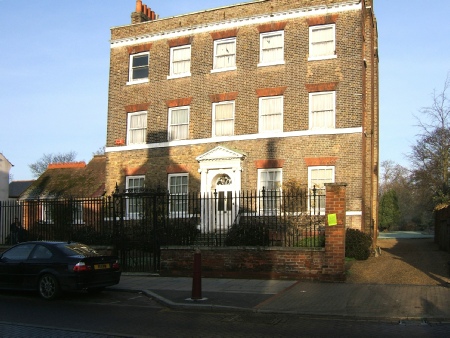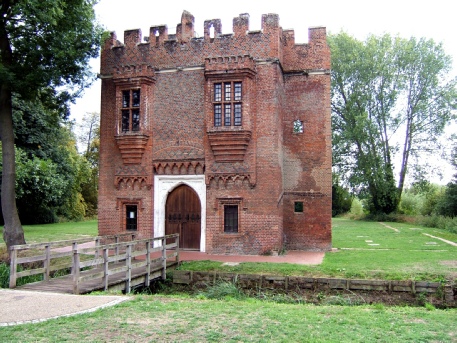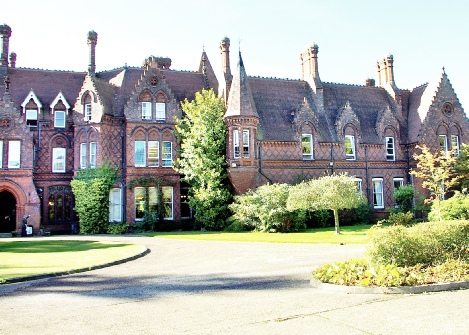STANSTEAD ABBOTTS TODAY – THE VILLAGE
by Ron Dale
This web-site is visited by family history researchers and others in the U.K. and
also in a wide variety of other countries spread across the world. It has occurred
to me that a short word picture of the village as it is today may be useful to web-site
visitors who do not have the opportunity to visit our modest but historical little
village, which some person of no taste once described as he passed us on his river
boat as a ‘One-horse town!’ If you have clicked on Media you will find dozens of
research stories amounting to hundreds of pages of history about our one-horse town
from a wide variety of contributors, and we have over 200 pages in our village history
book. As a Yorkshire-man from God’s Own Country I will state here categorically that
I retired in Stanstead Abbotts 20 years ago and would not wish to live elsewhere.
Coincidentally, our chairman Ian also hails from God’s Own Country and he has also
retired here. It can’t be all that bad!
SOME STATS ABOUT MODERN STANSTEAD (Details from 2011 Census)
The rate of unemployment in Stanstead Abbotts is lower than the Hertfordshire
average and the national average.
The number of people claiming benefits of all kinds in Stanstead Abbotts is
about 10% lower than the national average. (DWP statistics)
A questionaire concerning health in the 2011 Census showed that more people
reported ‘very good’ health, higher than the national average.
The population of Stanstead Abbotts is above the national average in age and
higher than the average for East Hertfordshire.
The village is surrounded by beautiful countryside with many interesting footpath
walks and has its hills and woods for those who enjoy the fresh air. If you drive
through on Sunday mornings you may have to slow down for horse-riders but the local
gardeners do not hesitate to clear up the evidence. We have a smattering of shops
on the High Street and a cafė plus a good fish and chip shop and three local inns
offer a range of meals.
We have three fishing lakes plus the Amwell Magna trout fishery made famous
by Isaak Newton. The R.S.P.B. Nature Reserve at Rye Meads attracts visitors from
a long distance and has many wooden walkways and raised hides including the popular
kingfisher hide. We also have a sailing lake and the convenience of the rivers Lea
and Stort for boating. And the local pharmacy is a very frtiendly business which
delivers medication for the elderly and infirm throughout the village. All things
considered, not a bad place to live!
STANSTEAD IS STILL A VILLAGE
Three places on the river Lea were once famous for the malting industry: Stanstead
Abbotts, Hertford and Ware. Today we are the only village left in the area with a
working malt-house, and for those who do not know, this is where barley is roasted
and processed to help create flavoursome beer, malt whisky, malted biscuits, malt
loaf, vinegar and other products. On days when the wind blows your way you will catch
a whiff reminiscent of Ovaltine from the malting, which whilst not strong, soon
becomes so familiar that you no longer notice it. There is very little industry in
the village, resulting in a large section of the population being employed in London
and becoming commuters. The High Street is no more than ten minutes walk from most
housing and the railway station a maximum of fifteen minutes. This contributes to
the ‘village’ feeling and most locally born residents would be insulted if you called
our village a town of any kind. The rail journey to North London (Tottenham Hale)
and the undergrtound system is around half-an-hour maximum.
Historically speaking, our village history has been dealt with in the village
history book (available in the Village Pharmacy or through the web-site) and under
Media on our excellent web-site (thanks due to the dedication of our web-master Brian
Johnson), where around 300 additional pages of our history may be discovered. Here
is a video, taped memoirs and a large selection of photographs. However, our most
important connection with national history is centred around the ruins of Rye House
Castle which is about a mile downstream from the river bridge on the southern extremity
of the manor. This was built in 1443 as a bijou castle with embattlements, moat and
drawbridge by Sir Andrew Ogard. One of its claims to fame is that in the 16th century
it was leased to a cousin of the Ogard family, Sir Thomas Parr. When he died, his
widow Lady Maude Parr maintained a small school for her own children and their cousins
in Rye House. Her daughter, Katherine Parr was educated here in our village and later
became the 6th wife of King Henry VIII. A claim to infamy follows the next appearance
of Rye House in the history books when it became the planned site of an assassination
attempt to kill King Charles II and his brother, James, Duke of York in 1683. Rye
House became famous again from about 1850 to 1930 when it was transformed into an
Entertainment and Leisure Centre by the enterprising efforts of William Henry Teale
and his successors, owners of the inn next to the ruins. Here he installed the Great
Bed of Ware, a fairground and beautiful gardens, a dance hall, a maze, sports facilities,
fishing, boating - all ideal fresh-air attractions for Londoners trapped in the
grimy smogy streets of the Victorian capital. He also brought a railway station
to his pub and his castle ruins and by sheer enterprise he created a site which attracted
thousands of Londoners daily and on one Bank Holiday Monday he claimed 25,000 visitors.
The small station at Rye House became the biggest draw of all the excursions in the
southern counties. Today only the restored Gatehouse remains standing and the site
is in the hands of English Heritage as a national monument of historical importance.
The full story of all these events and many others can be read here on this web-site.
Some of the houses in our High Street can be traced back to the 17th century
with one or two earlier, but obviously they have more modern frontages for the shops.
The village is home to one of the largest missionary colleges in the world, the
All Nations Christian College at Easneye, a Victorian mansion just outside the village
at the end of a one-mile drive. Other impressive houses are Stanstead Hall, a large
Georgian house in the High Street and Abbotts House in Roydon Road. Near the late
15th century Red Lion Inn at the corner with Cappell Lane is the 16th century boys
grammar school, now known as the Clock House. About a mile outside the village at
the top of Cats Hill is Netherfield, once the home of Charles Booth, gin magnate,
and a little further on is the reputed site of the original Domesday village of
Stanestede, where St. James, the old retired parish church still stands. This is
undoubtedly the oldest building in the village, dating back to cirtca 1060 according
to a recent survey. This has the most impressive house in the area adjacent to it,
Stanstead Bury. It is now the private family home of Mr. & Mrs. Trower, but for about
300 years it was the manor house of the village. A new church, St. Andrews, was built
in Cappell Lane in 1881.
The river Lea, which has historically been very important to the village malting
industry when a steady flow of barges carried barley malt to the large London breweries,
starts life near Luton in Bedfordshire, flows through the grounds of Hatfield House
and on to Hertford, Ware and Stanstead Abbotts and eventually pours into the London
Thames. Here on our bridge we have a picturesque view downstream of weeping willows
dipping their tips into the water and colourful narrow-boats dotted around one of
our two marinas. In summer the river brings many water-borne holiday-makers to relax
near the wharfing around the bridge and topping up their supplies in our local shops.
People passing by on the water may glance up and see through blinkered eyes only
a one-horse town or even a one-street town and they see none of these fine buildings
or anything of their history. Apologies for using a cliché, but there are none so
blind as those who will not see.
Ron Dale, July, 2017

